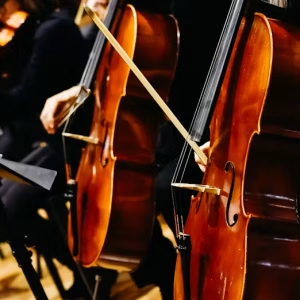A Vital Artery in Dubai’s Transport Network
Dubai’s rapid development over the past few decades has been matched by equally ambitious infrastructure projects designed to support its growth. Among these, the Business Bay Crossing stands as a critical component of the city’s transportation network, connecting key districts and facilitating the movement of people and goods across the bustling metropolis. Officially opened in 2007, the crossing remains a testament to Dubai’s foresight in urban planning and its commitment to world-class connectivity.
Located at the southern end of the Dubai Creek, the Business Bay Crossing links Deira and Bur Dubai to the newer business and residential areas like Business Bay, Al Jaddaf, Al Khail Road, and Ras Al Khor, forming a key route for daily commuters and logistics operations. With the city continuing to grow at an accelerated pace, the crossing has become more than just a bridge—it is a strategic lifeline.

Business Bay Crossing :Design, Capacity, and Engineering Excellence
The Business Bay Crossing, also known locally as the Ras Al Khor Bridge, is a magnificent feat of engineering. It spans approximately 1.6 kilometers and comprises a six-lane dual carriageway that accommodates up to 26,000 vehicles per hour. The structure is designed to handle Dubai’s high-volume traffic while ensuring smooth flow and reduced congestion on other key crossings, such as Al Garhoud and Al Maktoum bridges.
What sets this crossing apart is its thoughtful integration with surrounding roads and flyovers. It seamlessly connects to the Dubai-Al Ain Road, Oud Metha Road, and Al Khail Road, making it a preferred route for drivers heading toward the downtown core, Dubai International Airport, and the southern regions like Dubai Silicon Oasis and Academic City.
Ease of Commute and Reduced Travel Times
One of the main goals behind constructing the Business Bay Crossing was to ease pressure on other routes across the Creek. Prior to its opening, commuters heavily relied on the Al Garhoud Bridge and Al Maktoum Bridge, both of which experienced heavy traffic, especially during peak hours.
With the launch of the Business Bay Crossing, travel times were significantly reduced for those commuting between Deira, Bur Dubai, and newer business districts. The bridge provides an efficient east-west connection, eliminating the need for detours through congested city centers.
It also plays a crucial role in linking commercial areas like Business Bay, DIFC, and Downtown Dubai with industrial and residential hubs in Ras Al Khor, Al Jaddaf, and Dubai Creek Harbour—all while maintaining steady flow even during rush hour.
Supporting Economic Growth and Urban Expansion
Beyond easing traffic, the Business Bay Crossing has also acted as a catalyst for economic development. By improving access to business districts and facilitating smoother logistics, the bridge has contributed to the growth of real estate, tourism, and trade sectors. The surrounding areas have seen a surge in residential developments, retail centers, and hospitality ventures—all attracted by the improved accessibility.
Projects like Dubai Festival City, Dubai Creek Residences, and the ever-growing Business Bay towers owe part of their success to the connectivity offered by this vital bridge. Businesses are more inclined to set up offices and showrooms in areas with reliable infrastructure, and the Business Bay Crossing plays a key role in this urban appeal.
Integration with Future Developments
Dubai is known for its long-term vision, and the Business Bay Crossing was designed with future scalability in mind. As the city gears up for even larger projects such as Dubai Creek Tower, The Lagoons, and Mohammed Bin Rashid City, this bridge continues to serve as a foundational element in connecting emerging urban centers with the established heart of the city.
Planned enhancements in public transport, including the expansion of the Dubai Metro and water taxi routes, are also expected to integrate with the areas around the bridge, offering multi-modal travel options for residents and tourists alike.
Environmental and Aesthetic Considerations
While functionality was paramount, aesthetics and environmental impact were also key considerations in the construction of the Business Bay Crossing. The bridge was designed to minimize its footprint on the Creek’s delicate ecosystem. The use of modern materials and engineering methods ensured that construction did not significantly disrupt marine or bird life.
Additionally, the bridge’s sleek, modern design complements the surrounding skyline, especially at night when it is illuminated and reflects beautifully on the waters of Dubai Creek. It enhances the visual appeal of the cityscape while serving a practical purpose—a hallmark of Dubai’s approach to urban design.
A Lifeline in Times of Emergency
The Business Bay Crossing has also proven invaluable in emergency and crisis situations. During major events, high-traffic festivals, or unforeseen disruptions, the bridge acts as a critical alternate route for ambulances, civil defense, and police vehicles. Its broad lanes and strategic position make it easy for emergency responders to navigate quickly between key areas of the city.
In times of natural events like flooding or sandstorms, having multiple robust crossings like Business Bay becomes vital to maintaining continuity in public services and business operations.
Public Reception and Daily Impact
For the average Dubai resident, the Business Bay Crossing has become part of daily life. Whether it’s the morning commute to work, school runs, business deliveries, or simply heading to the airport, thousands of residents and visitors use this bridge daily. Most praise its wide lanes, smooth surface, and efficiency during peak hours. Taxi drivers, logistics operators, and ride-hailing services often prefer routes involving this bridge because of its reliable traffic conditions.
Residents in neighborhoods like The Executive Towers, Al Jaddaf, and Ras Al Khor also benefit from improved real estate value, thanks to the proximity to this vital artery.
Looking Ahead: Continued Relevance in a Smart City
As Dubai transitions toward becoming a smart and sustainable city, infrastructure like the Business Bay Crossing will remain critical. Smart traffic management systems and AI-powered analytics are already being tested in Dubai to optimize traffic flow. These technologies are likely to be integrated with major roads and bridges to predict congestion, manage tolls, and improve safety.
Dubai’s Roads and Transport Authority (RTA) continues to monitor the performance of all crossings, including Business Bay, and upgrades are implemented based on traffic studies and projections. As electric vehicles and autonomous driving gain traction, the infrastructure must evolve—and the Business Bay Crossing is well-positioned to adapt.
Conclusion: Bridging Communities, Businesses, and the Future
The Business Bay Crossing is more than just a bridge—it is a symbol of Dubai’s commitment to progress, efficiency, and urban harmony. By connecting vital parts of the city, supporting economic development, and easing the burden on older crossings, it plays a key role in the day-to-day life of Dubai’s residents and businesses.
Its role in shaping the movement of people, goods, and opportunities across Dubai is immense. As the city continues to evolve, the Business Bay Crossing will stand as a timeless piece of infrastructure—quietly supporting the dynamic rhythm of one of the world’s most ambitious urban landscapes.
Do follow Uae stories for more Updates
It’s Advantage India in Smartphone Production: A Global Shift in the Making












